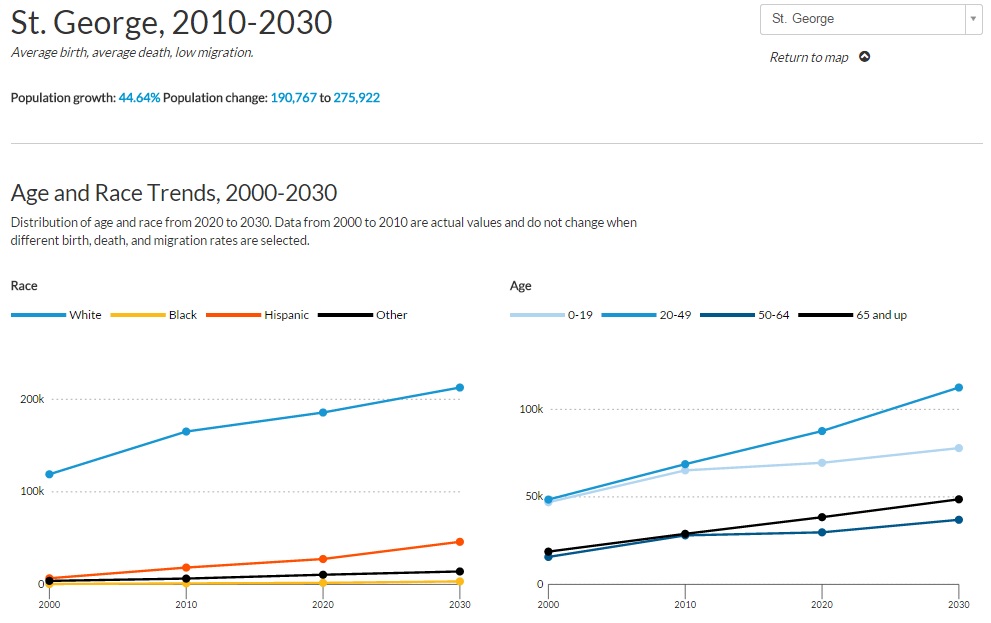
For months, my colleagues and I worked to build a population projection tool called Mapping America’s Futures. As we reviewed the results from different assumptions, we came across some implausible outcomes. Was there a problem in the coding, in the assumptions? Can the population of a commuting zone, for example, really grow to 1.5 times its current size over just a decade?
If the past is any indication, the answer is yes.
Between 2000 and 2010, the fastest-growing commuting zone, St. George, UT, grew by 47 percent, 4.8 times the rate of national growth over the same decade. On the other end of the spectrum, King Salmon, AK lost a quarter of its population during the same decade.
These changes in populations can be even more dramatic when you look at race- and ethnicity-specific population counts. The population of non-Hispanic blacks more than doubled in 40 commuting zones between 2000 and 2010 and shrunk by half in another 27 commuting zones. The population of Hispanics more than tripled in 14 commuting zones over the same period, with the Hispanic population in the Huron, SD commuting zone growing an astounding eightfold over the decade.
Relative to the dramatic changes in population counts for commuting zones in the past, the projected population counts from Mapping America’s Futures seem much more plausible. Between 2020 and 2030, the model projects the Huron, SD commuting zone to be the fastest-growing commuting zone, increasing by 43 percent over the decade assuming average birth, death, and migration rates. This is 5.8 times the pace of the national population.
Under the same assumptions, the model projects non-Hispanic black populations to double in 28 commuting zones and decrease by half in 22 commuting zones between 2020 and 2030. And no commuting zones will experience tripling of their Hispanic population.
So as you explore the data in the tool and you see the Hispanic population of the Scranton, PA grow by 158 percent, or the Las Vegas, NV-AZ commuting zone grow by almost 700,000 people over a decade, keep in mind the dramatic changes in population commuting zones have experienced in the past. Such dramatic changes in population really could happen, and more dramatic changes already have.
The question then becomes: what can and should commuting zones do to prepare for such changes? What policies do school districts need to put in place in the Pullman, WA-MT commuting zone to support a 33 percent growth in the number of children over a decade? What infrastructure and housing needs to be built in the Huron, SD commuting zone? These are some of the important conversations we hope to spark across the country.
Tune in and subscribe today.
The Urban Institute podcast, Evidence in Action, inspires changemakers to lead with evidence and act with equity. Cohosted by Urban President Sarah Rosen Wartell and Executive Vice President Kimberlyn Leary, every episode features in-depth discussions with experts and leaders on topics ranging from how to advance equity, to designing innovative solutions that achieve community impact, to what it means to practice evidence-based leadership.
